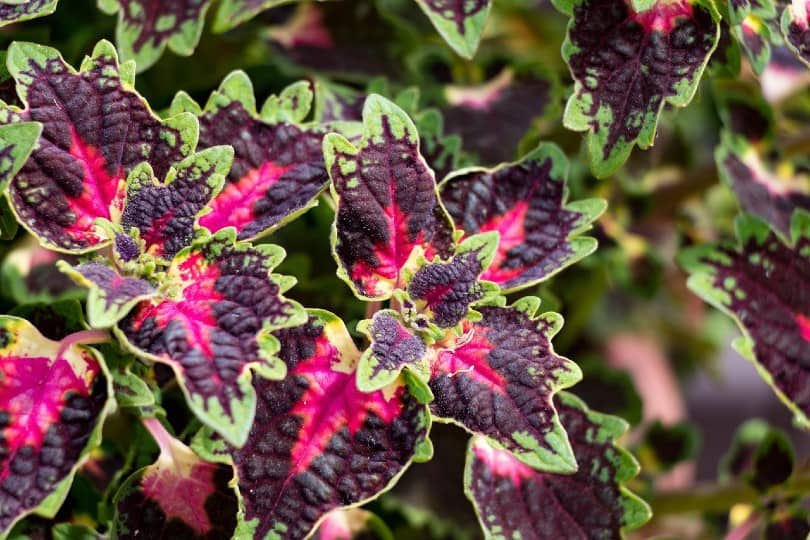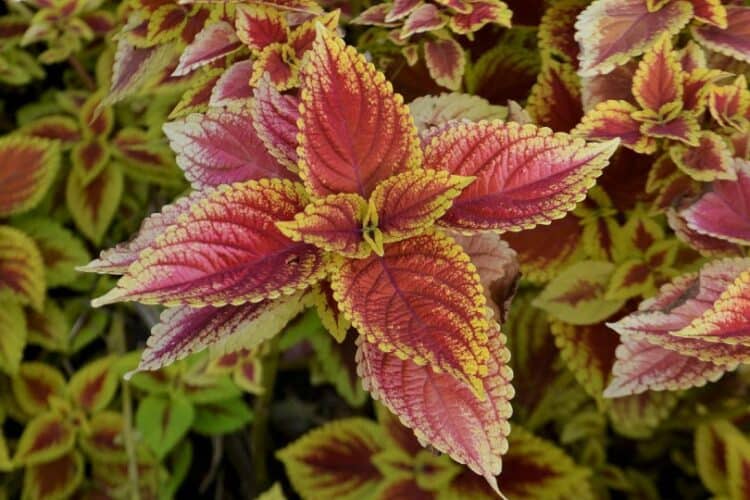The coleus plant has spectacular, vibrant foliage that will brighten up your home, but is it safe around your cat? Unfortunately, the coleus plant may be toxic to your cat, even just brushing up against its leaves or flowers can cause skin irritations and burns if left untreated. If your cat goes one step further and ingests any part of the plant, it can lead to gastrointestinal symptoms.
The coleus plant is typically grown outdoors, but it also responds well to potted environments, so just be aware the danger for your cat could exist both inside and outside. Read on to find out the symptoms and treatment and take a closer look at what could happen to your cat if they come into contact with this plant.
Symptoms of Coleus Poisoning
The Coleus amboinicus is an umbrella term for several varieties that you will need to be aware of:
- Bread and butter plant
- Country borage
- East Indian thyme
- Indian borage
- Spanish thyme
- Stinging thyme
Most cats are choosy about what they nibble on, but boredom, curiosity, and easy access are a terrible combination. They can also ingest the essential oils by licking them off their fur if they’ve brushed against it. So even if your cat isn’t normally a nibbler, accidents can happen.
The plant’s essential oils are absorbed quickly into your cat’s system, which can have dire consequences, such as respiratory depression or slowed breathing. This can ultimately be fatal to your cat. If your cat comes into contact with the coleus plant, you may notice the following symptoms:
- Breathing difficulty
- Burns on face, tongue, and gums
- Contact dermatitis
- Depression
- Diarrhea (possibly bloody)
- Drooling
- Hypothermia
- Lethargy
- Loss of appetite
- Pawing at the face/mouth
- Skin redness visible underneath cat’s fur
- Tremors
- Vomiting (possibly bloody)
If you catch your cat nibbling at a coleus plant, cut a sample or take a photo of the plant to show your vet. This way, they can begin the most appropriate treatment immediately. If you haven’t been fortunate enough to witness them eating the plant, but you notice any of these symptoms and you have a suspicion what the culprit is, your vet may ask for a vomit or stool sample.

Treatment for Coleus Poisoning
In terms of treatment and recovery, it depends on how long your cat had contact with the plant and how much they ingested. Getting them to the vet is the most important start. Don’t try any first aid at home, as some plant substances can make a home remedy more dangerous to your cat. For example, sometimes, the vet will suppress your cat’s urge to vomit by administering antiemetic medication because the essential oils present in the coleus plant make vomiting dangerous.
A cat whose coleus poisoning has not been diagnosed or treated right away is at risk of developing kidney or liver damage. The vet may keep your cat overnight, which gives you time to prepare your home for the recovery period.
You’ll want to create a stress-free, comfortable area for your cat to recover. You may be required to go to follow-up appointments with your vet just to make sure your cat is recovering well. Outside of these appointments, if you’re ever worried about your cat’s progress, contact your vet for advice.
Final Thoughts
The consequences of your cat’s curiosity can be terrifying, so the best solution is to remove the plant from your home entirely or at least relocate it to a room and a place inside that room that your cat cannot get to. Owning a cat doesn’t mean you can’t enjoy plants in your home or garden, either. It’s about picking something that won’t poison them if they accidentally brush against it or take a cheeky nibble. ASPCA has a list of non-toxic plants you can add to your home that won’t pose a risk to your cat’s health.
There is also the option of cat grass, which won’t give them an upset stomach if they ingest a lot of it. Cat grass can also have added benefits for digestion and cats who suffer from fur balls. Of course, if you’re thinking of making a diet change, consult your vet first.
Featured Image Credit: Pixabay














